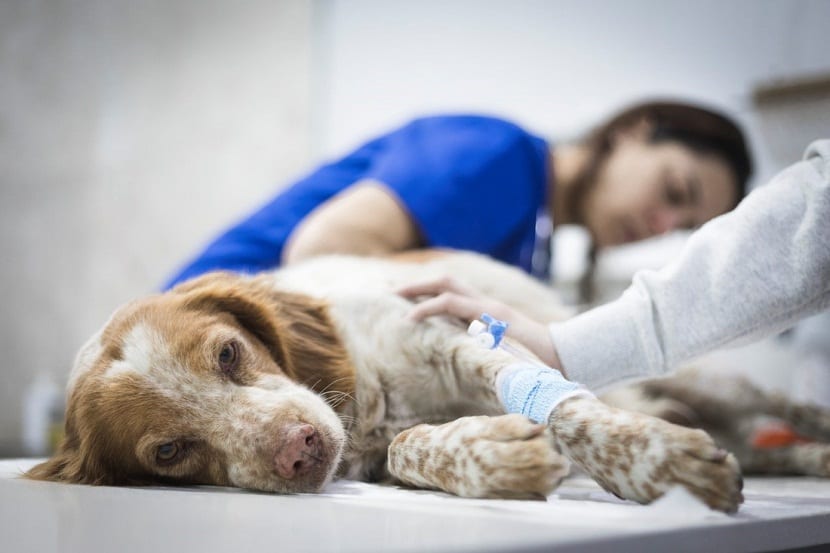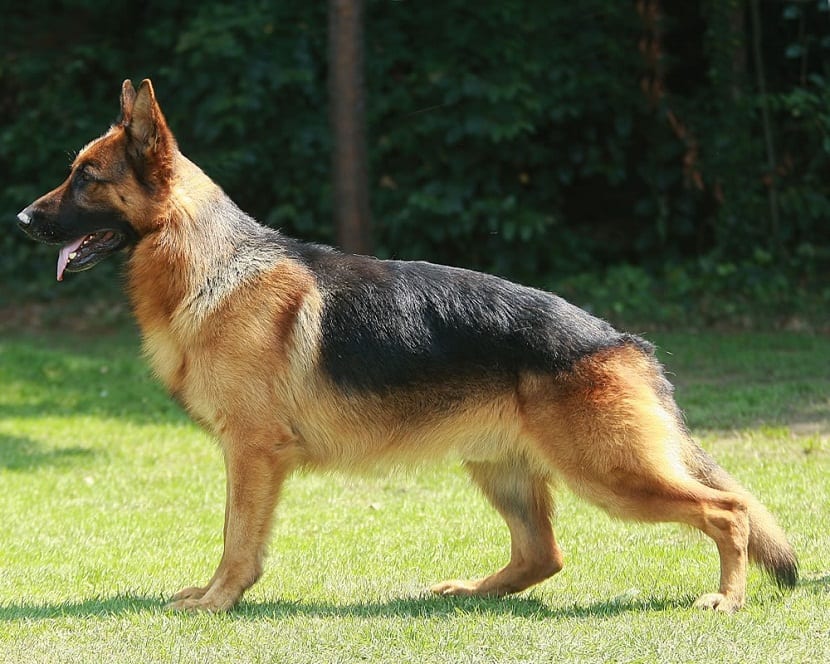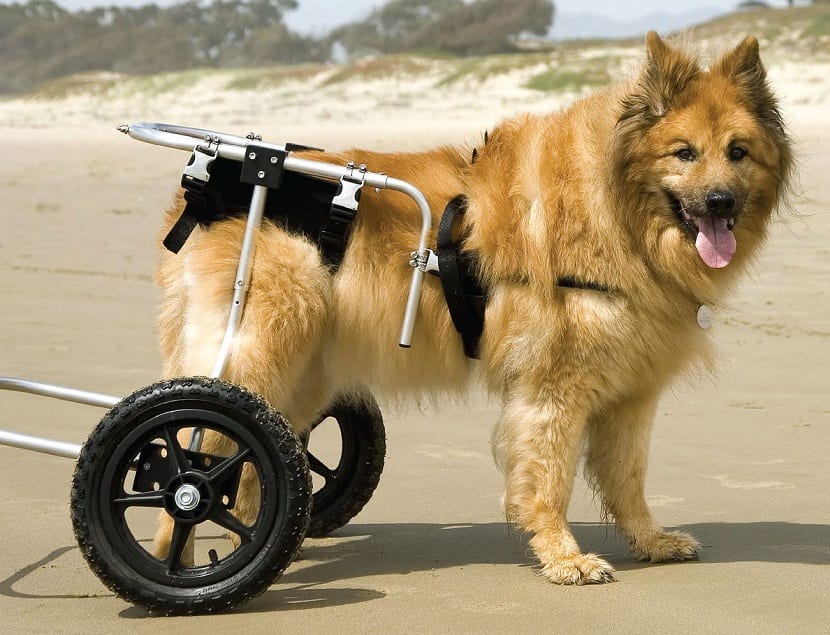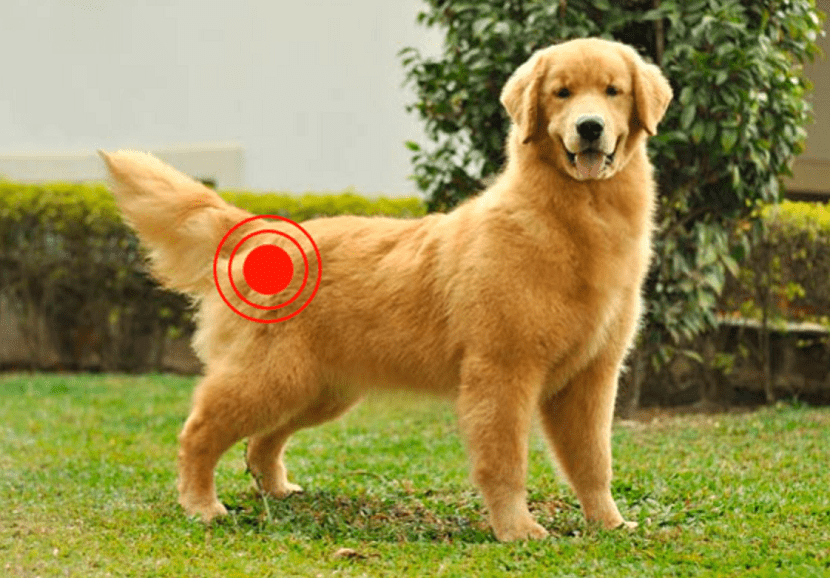
Hip dysplasia is usually common in dogs that meet the aforementioned conditions, however there are ways to prevent them to achieve a better quality of life for pets and avoid suffering. This article will show important information that will help owners avoid or prevent this disease in pets.
When documenting about the characteristics and care of a certain canine breed, certain information between the different dogs always coincide. A word that is repeated continuously among diseases of genetic origin, overweight or of medium to large races is the hip dysplasia.
Concept and causes of canine dysplasia

Hip dysplasia is the name by which a hereditary bone disease is known that can manifest in dog puppies between four to five months of age. They also occur in humans, but this article will only discuss canine dysplasia.
This disease is degenerative and consists of the deformation of the hip joint. This refers to the point of attachment of the head of the femur with the acetabulum of the hip.. The malformation can cause pain and lameness and become a serious problem for the pet. The constant friction causes wear of the femur bone and hip causing osteoarthritis.
Causes
Being a congenital problem, its main cause is genetic inheritance. However there are factors that can make it appear even in dogs, without this predisposition and in those who do have it aggravate the condition. For example, being overweight is quite a damaging factor, especially in puppies. Sedentary life and excessive exercise are also counterproductive, that is, imbalances in physical activity. Food is a fundamental factor since if this is not balanced and in accordance with the nutritional requirements of the pet breed, it generates obesity or a weak skeleton prone to disease.

Large and giant breeds are the most susceptible to hip dysplasia. The main reason for this circumstance is precisely its weight and size. It should also be considered that the growth of these breeds is faster and any hormonal abnormality prevents the bones from receiving the necessary nutrients for their development, making them more susceptible to the disease.
Recent studies from the University of California Veterinary School yielded important results linking early castration (performed before six months) with hip dysplasia. This conclusion was reached after verifying that neutered puppies were 50% more likely to develop the disease. Weight is another important factor as a cause of dysplasia and not only refers to the body weight of the pet but to what it can carry if it fulfills a function that has this requirement. The sudden movements and poorly performed exercises they are also factors that increase the chances of dysplasia.
Symptoms of dysplasia in puppies and adults
It is important to know the symptoms of dysplasia, since they depend on the moment in which the disease occurs and the level of severity, the prevention and care strategies that are carried out. Pets before the year show the following symptoms of dysplasia, they sit for a long time and show little physical activity. Puppies often complain if they are played roughly. They also avoid fear and insecurity on stairs and their hind legs are weak and close together.
Adult dogs have symptoms that are complicated by the onset of osteoarthritis. However, in general, they show obvious pain and lameness. Runs with movements similar to those of rabbits, that is, with the two hind legs together or exaggerated hip movements.
It shows difficulty or slowness of movement in cold weather and in the morning, muscle development in the front limbs, loss of muscle mass in the rear limbs, and mood swings and pain if the hips are touched.
Prevention
The first recommendation to prevent hip dysplasia is to perform the PennHip test on the puppy before four months. After this period, if the offspring is genetically predisposed, it can develop the disease if some environmental circumstances such as those mentioned above are met. A test can also be performed within a few weeks of the puppy's life known as Dysgen, test that is carried out on the Labrador Retriever and has a 95% reliability.
Having honest information about the puppy's parents is also very helpful. It is important to know that parents can be carriers without showing symptoms of the condition. On the other hand, parents can have the disease and pass it on and the puppy would be a carrier without suffering from it. In this way, the performance of the PennHip test becomes relevant again.
Food
The nutritional suggestions for each breed should be followed, being important choose the best feed for this disease. This must be extended to the mother during the gestation stage. The nutrients that the pet should consume will provide vitamins and minerals necessary for their optimal development. If necessary, a supplement will be recommended preventively.
Avoid rough games and excess weight is very important accompanied by physical exercises according to the breed and age of the pet. A sedentary life is very counterproductive as well as a diet that leads to obesity. It is important that the surface where the pet moves is not slippery, making movement difficult and facilitating accidents or malformations during development.
Treatments

Treatments for hip dysplasia vary depending on the level of severity of the dysplasia. Veterinarians determine this aspect through Norberg angle, for which X-rays of the pet's hip need. If the angle is greater than 105º the dog does not have dysplasia. Nevertheless, gravity increases as angle decreases the most serious being those measurements below 90º that tend to present dislocation.
For less severe cases, there are conservative treatments such as chondroprotectors to slow down the disease. Pain relievers and anti-inflammatories may also be given to relieve pain symptoms. Hip supports are very useful to control discomfort and reduce the dose of remedies. Controlling weight with a proper diet for your pet is essential to avoid unnecessary complications.
For the most serious and complex cases, the most effective solution can be found in surgery and as palliative surgical treatment, arthroplasty stands out. Another curative treatment is the triple pelvic osteotomy recommended for puppies between six and ten months. There is also surgical hip replacement and triple osteotomy for puppies between three and four months..
After surgical treatments that are very effective, the dog will almost always require physical therapy and care to treat hip dysplasia, strictly follow veterinary recommendations. The wheelchair for dogs are very useful both for therapy and to offer a better quality of life to pets that lost mobility of the lower limbs due to dysplasia or other diseases.
